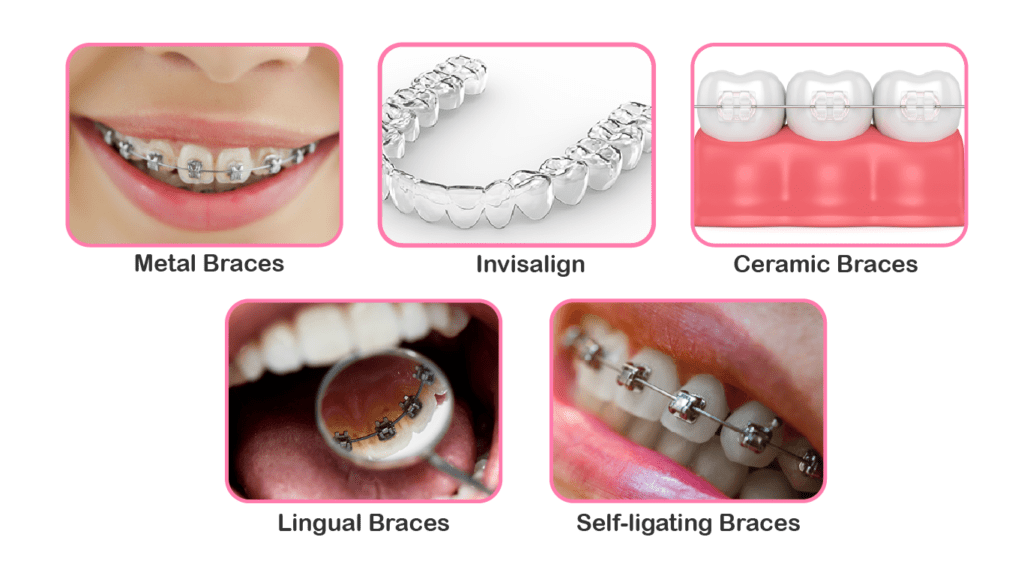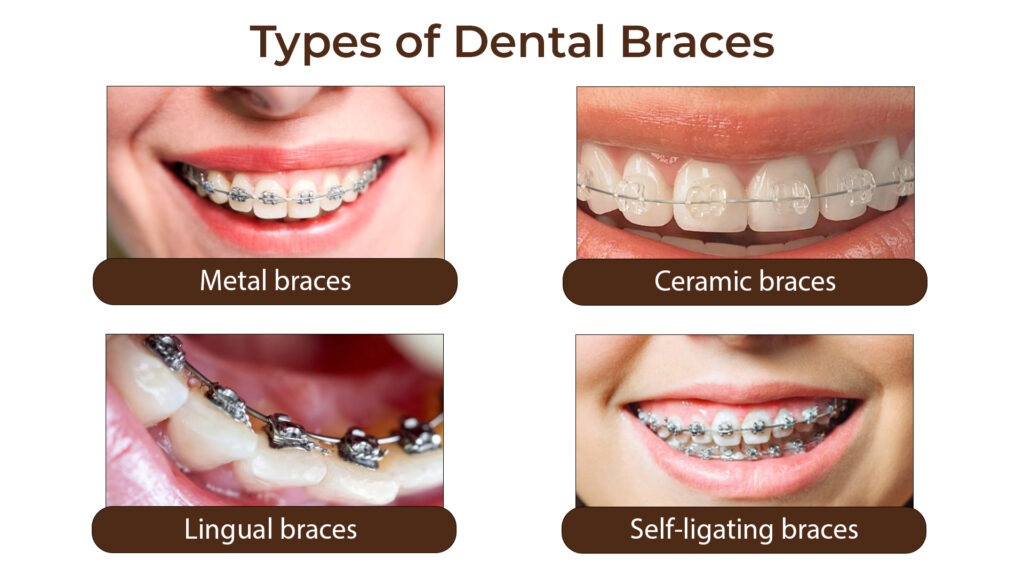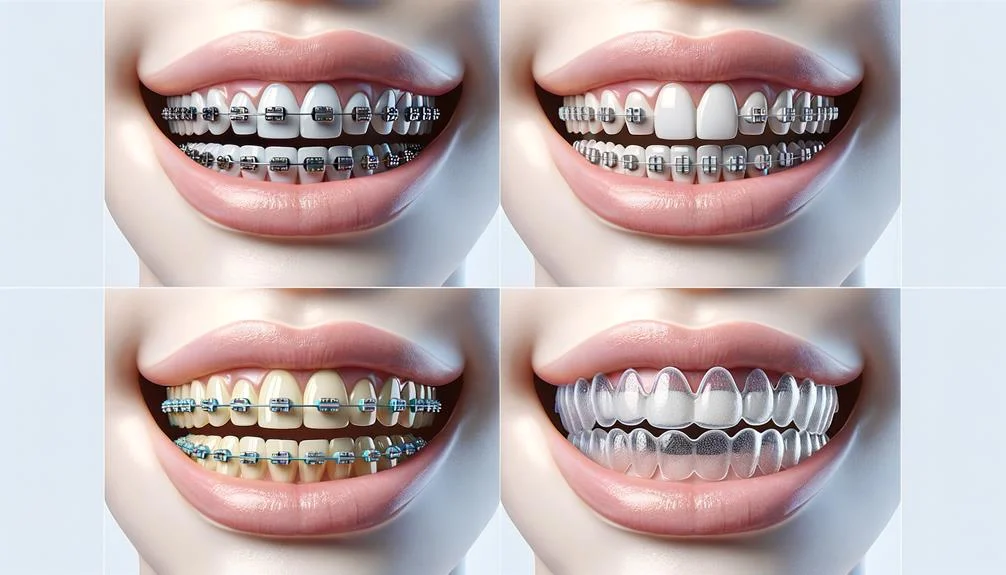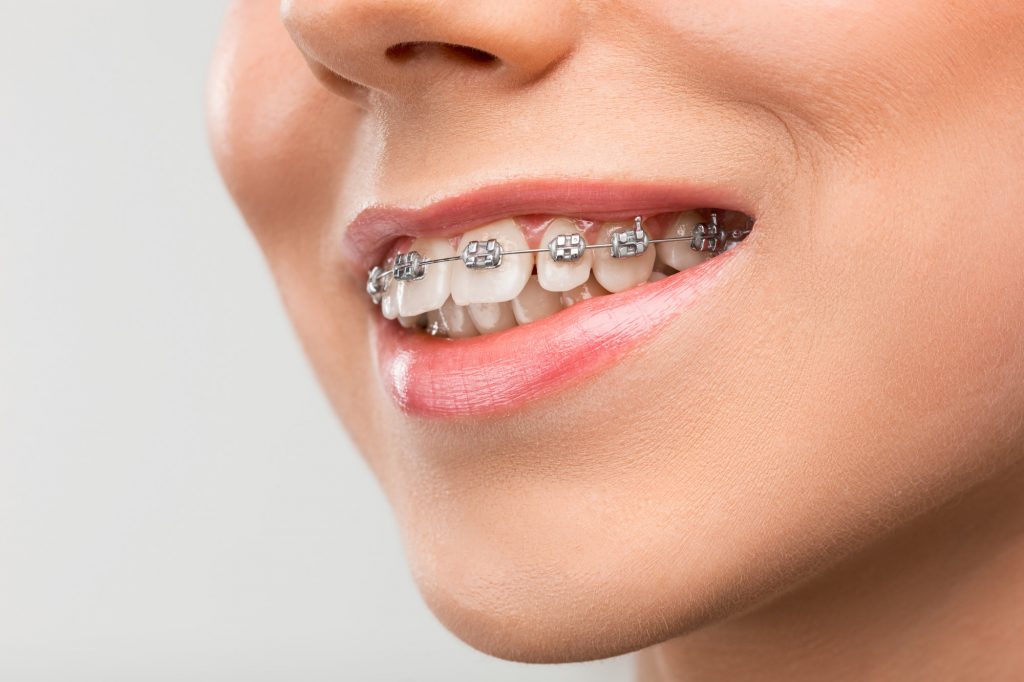Dental braces are tools used to correct various orthodontic issues by attaching them directly onto or behind your teeth. These problems may include crowded or crooked teeth, overbites, underbites, incorrect jaw position, jaw disorders, smile correction, optimal teeth alignment, teeth straightening, and irregularities.
Dental braces are devices positioned directly on or behind your teeth to address one or more orthodontic issues.

- Crowded or crooked teeth
- Overbites or Underbites
- Incorrect Jaw Position
- Jaw disorders
- Smile Correction
- Optimal Teeth Alignment
- Teeth Straightening
- Teeth Irregularities
Types of Dental Braces

- Traditional Braces: These are the metal braces you might be familiar with. Metal brackets and wires are utilized to gradually align your teeth. They’re sturdy and effective at fixing various teeth alignment issues.
- Ceramic Braces: Ceramic braces work like traditional braces but use tooth-colored or clear ceramic brackets. They blend in more with your teeth, making them less noticeable compared to metal braces.
- Lingual Braces: Lingual braces are placed behind your teeth, making them nearly invisible when you smile. They work like traditional braces but are hidden from view, making them a discreet option for teeth straightening.
- Clear Aligners: Clear aligners are a series of custom-made, transparent trays that gradually shift your teeth into the desired position. They’re removable, making them convenient for eating and cleaning, and they’re practically invisible when worn.
- Self-Ligating Braces: These braces use a specialized mechanism to hold the archwire in place, eliminating the need for elastic bands. They can result in faster treatment times and require fewer adjustments compared to traditional braces.
- Invisible Braces: Invisible braces, such as Invisalign, are clear aligners that are custom-made to fit your teeth snugly. They’re removable, comfortable, and nearly invisible, making them a popular choice for adults and teens who want a discreet orthodontic treatment option.
What do braces look like?
Braces typically consist of metal brackets attached to the front of your teeth with a thin wire running through them. The brackets are usually made of stainless steel, and the wire is often held in place with colorful elastic bands. When you smile, the brackets and wire are visible, giving your teeth a distinct appearance. However, there are also less noticeable options available, such as ceramic braces or clear aligners, which are more discreet.

How long will I need to wear braces for?
The duration you’ll need to wear dental braces varies depending on your specific orthodontic needs and the type of braces you choose. Generally, treatment can last anywhere from several months to a few years. Your orthodontist will create a personalized treatment plan and provide an estimate of how long you’ll need to wear braces to achieve your desired results. Regular adjustments and proper care of your braces can help ensure that your treatment progresses smoothly and efficiently.
Conclusion :
Dental braces are a reliable and cost-effective option for straightening teeth, although they may cause initial discomfort and are visible when smiling. Despite these drawbacks, they remain a popular choice for correcting orthodontic issues effectively. With proper care and regular adjustments, braces can help achieve a straighter smile and improved dental health over time.

